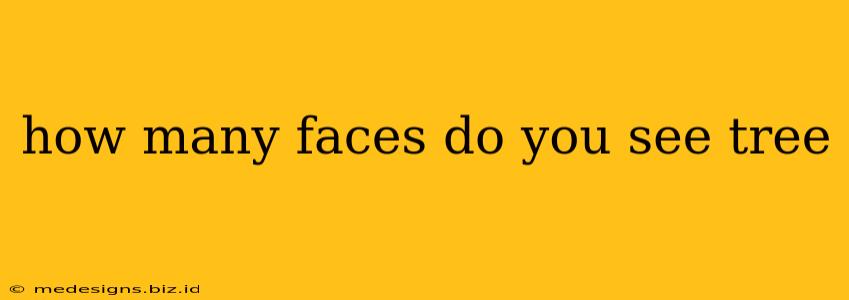How Many Faces Do You See in a Tree? A Look at Pareidolia and Nature's Art
Have you ever looked at a tree and seen a face staring back? It's a common experience, and one that highlights a fascinating aspect of human perception called pareidolia. This article explores the phenomenon of seeing faces in trees, its psychological basis, and the artistic interpretations that arise from it.
What is Pareidolia?
Pareidolia is the tendency to perceive a specific, often meaningful image in a vague or random stimulus. Think of seeing shapes in clouds, or hearing messages in random noise. Seeing faces in trees – tree faces – is a classic example. Our brains are wired to recognize faces; it's a crucial survival skill. This ingrained ability sometimes leads to misinterpretations, causing us to project familiar patterns onto ambiguous visual information.
Why Do We See Faces in Trees?
The reasons behind seeing faces in trees are complex, but several factors contribute:
-
Brain Wiring: As mentioned, our brains are highly attuned to recognizing faces. This is a deeply ingrained survival mechanism. Even subtle features like two dark spots for eyes and a line for a mouth can trigger our face-recognition system.
-
Pattern Recognition: Humans are excellent pattern-recognizers. We constantly seek order and meaning in the world around us. Branches, knots, and the overall shape of a tree can create configurations that resemble facial features.
-
Emotional Context: The emotional state of the observer can influence what they see. If you're feeling anxious or lonely, you might be more likely to project a face onto a tree, potentially interpreting its expression based on your mood.
-
Cultural Influences: The way we perceive faces can also be influenced by our cultural background and exposure to different artistic representations.
The Artistic Significance of Tree Faces
The phenomenon of seeing faces in trees has inspired artists and photographers for centuries. Many works feature trees with strikingly human-like features. These depictions often explore themes of:
-
Nature's Personification: The act of assigning human characteristics to trees symbolizes a deeper connection between humanity and nature.
-
Spiritual Significance: In many cultures, trees hold sacred meaning, representing life, death, and the cycle of nature. A face in a tree can be seen as a symbolic representation of these spiritual concepts.
-
Environmental Commentary: The artistic portrayal of tree faces can also be used to raise awareness about environmental issues and the importance of preserving our natural world.
How Many Faces Can You See?
Ultimately, the number of faces you see in a tree is subjective. It depends on your individual perception, your current emotional state, and the specific tree you're looking at. There's no right or wrong answer. The beauty lies in the individual experience and the creative interpretations it inspires. So, go out, look at some trees, and see what faces you discover!
Further Exploration
Consider searching for images online of "tree faces" or "pareidolia in nature" to see examples from other observers and artists. You might be surprised at the variety of interpretations and the creativity that emerges from this seemingly simple phenomenon. You might even start to see faces in trees everywhere you look!
